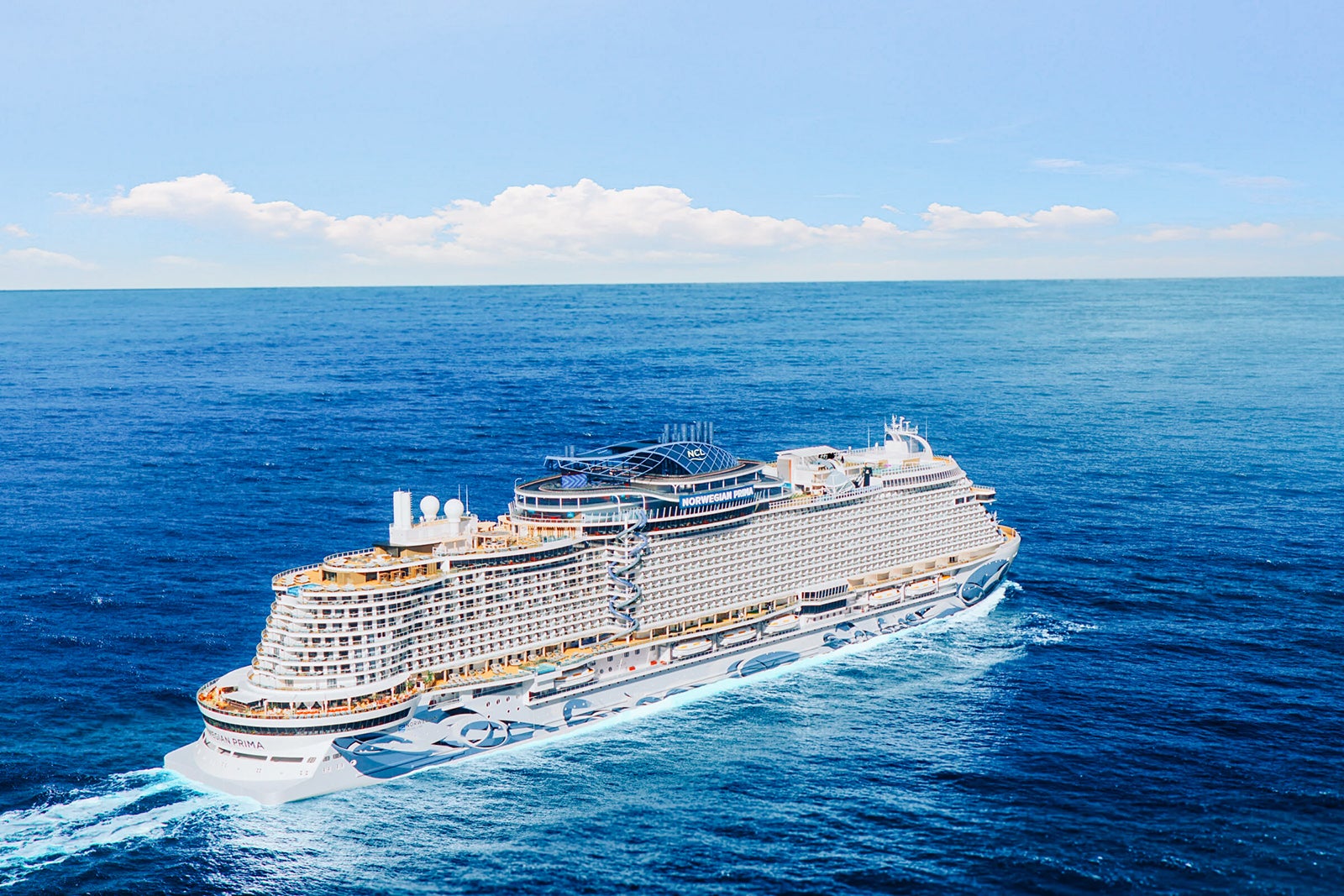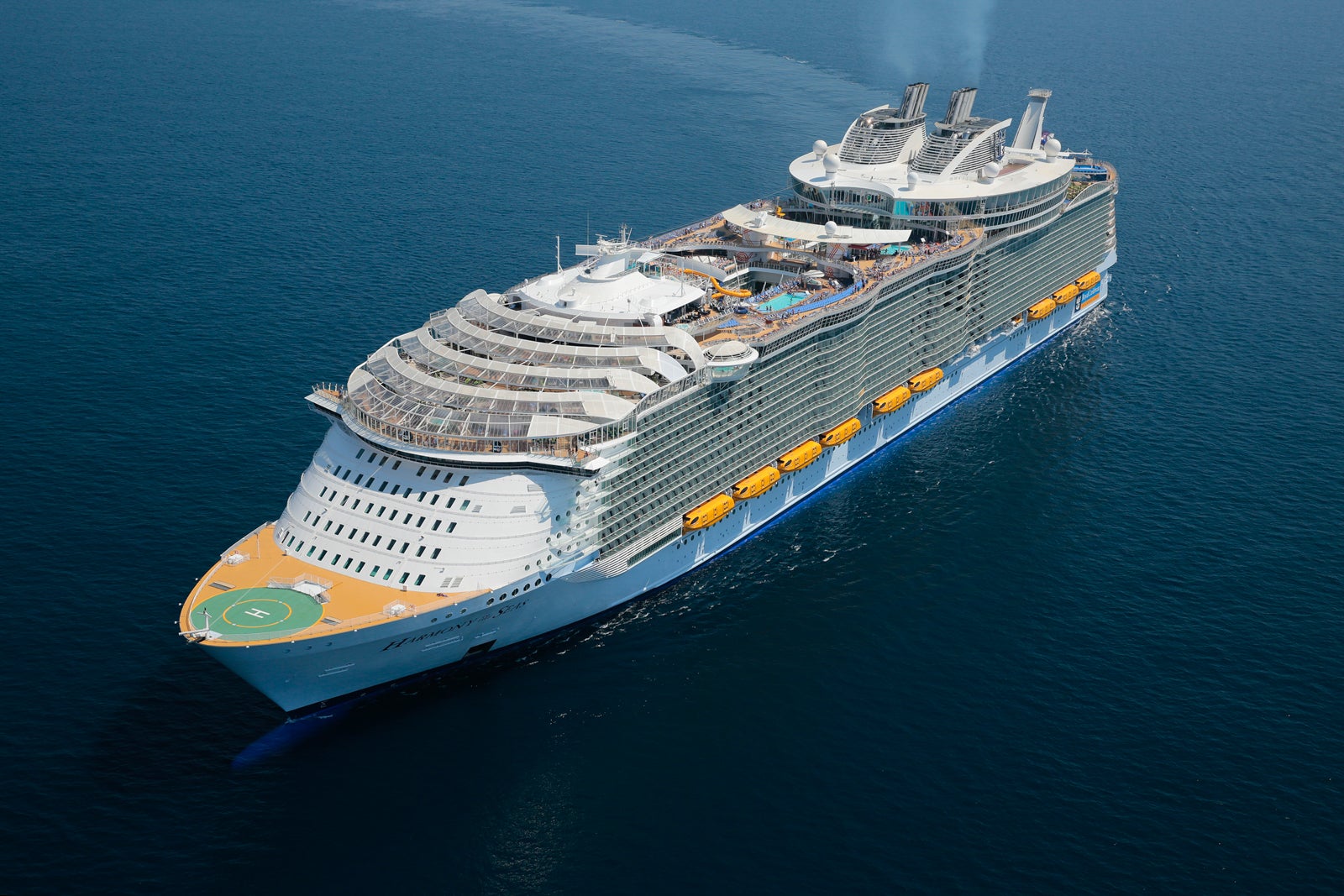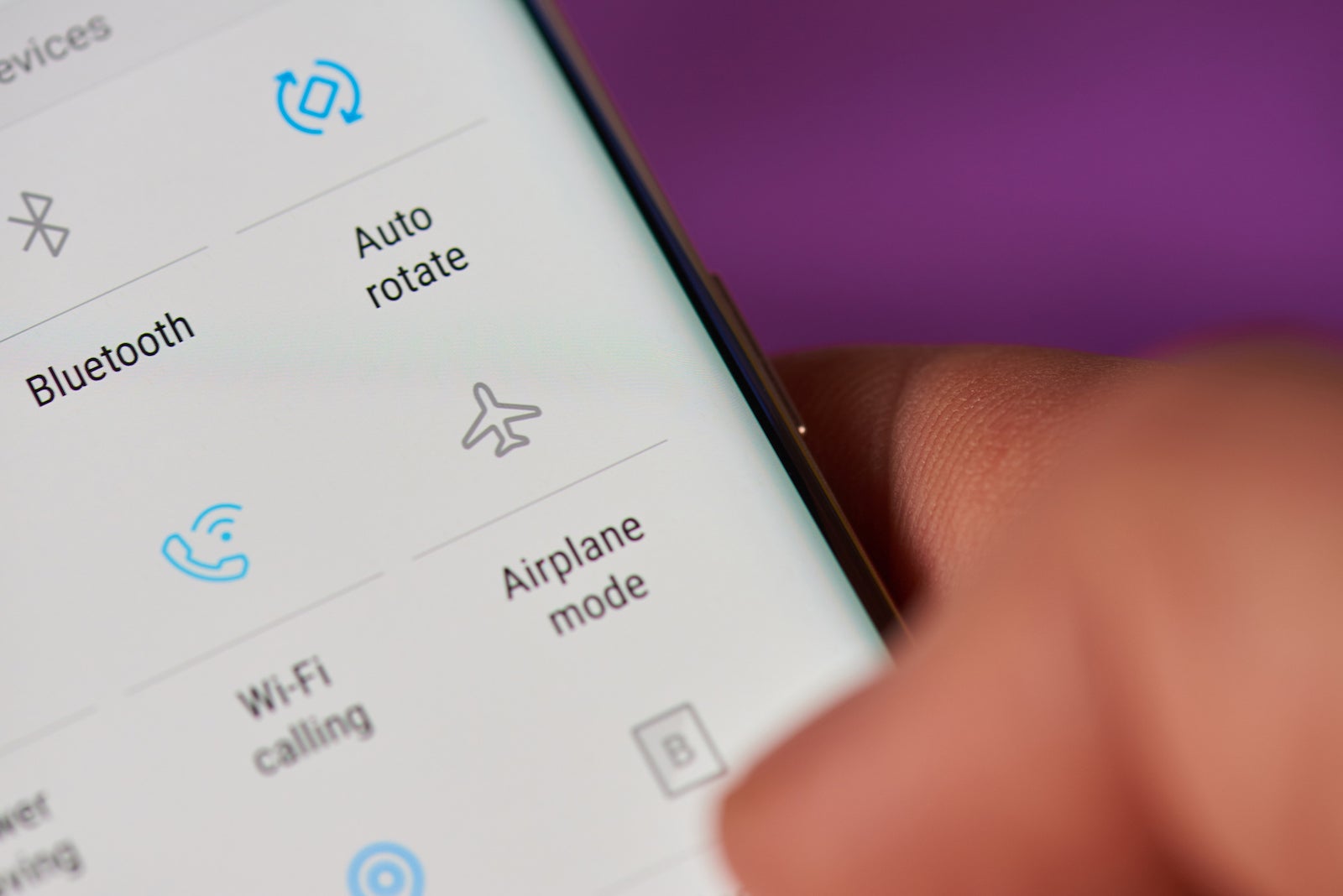When I first began writing about cruising three decades ago, the typical internet connection at sea wasn’t just slow. It was glacial. You’d click on a website only to experience many seconds of frustration. Maybe the page would come up. Maybe it wouldn’t. Maybe the cruise would end while you were still sitting there.
Thankfully, those days are long gone. Internet service on cruise ships in recent years has gotten a lot faster — and less expensive, to boot. Indeed, if you haven’t been on a cruise in a few years, you might be shocked at how much faster the Wi-Fi speeds are on cruise ships than during your last sailing — and how much more affordable internet packages have become in some cases.
While there still are some ships and some cruising locations where surfing the internet takes the patience of Job, excruciatingly slow internet speeds on cruise ships are increasingly a thing of the past.
That’s the good news. The bad news is that Wi-Fi on cruise ships still isn’t as fast or reliable as what you have at home.
Here is a look at the ins and outs of Wi-Fi on cruise ships, including five things you should know about the internet at sea.
Wi-Fi on cruise ships will never be as fast (or reliable) as home
Yes, all cruise ships today offer an internet connection, but it might not be the seamless experience you’ve come to expect on land.
While the internet situation on ships has improved significantly in recent years, you’ll still find speed and reliability issues when surfing the Web on some ships in some locations around the world.
Related: 16 mistakes cruise ship passengers make on disembarkation day
Why aren’t internet speeds and reliability the same on ships as they are on land? One obvious reason is that there is no cable wire running to your cruise ship. On cruise ships, every packet of data you are downloading onto your phone or computer, for the most part, is coming over a satellite, which is not a quick or inexpensive proposition.
In recent years, maritime communication companies that specialize in providing internet connections to ships have been trying to speed things up. Solutions have included adding more satellites and linking their systems to land-based towers that connect with ships as they near shore.

But, in the end, there are limits to just how well a satellite system can work. For starters, a ship needs a clear “line of sight” to a satellite to exchange data, something that isn’t always the case. Cruise ships traveling through the famed Norwegian fjords, for instance, can lose their satellite signal due to the height of surrounding mountains.
And there are certain parts of the world where satellite coverage is too thin or nonexistent to allow for internet access on cruise ships — though this has been changing fast. During a sailing in the Russian Arctic on a Hapag-Lloyd Cruises ship, I was forced to live without internet for a good part of a week due to a lack of satellite coverage in the area (something that, I must say, was kind of wonderful).
So while onboard cruise Wi-Fi speeds are getting better, they’ll likely never be as fast as at home, where a hard wire brings the signal straight to your router.
Onboard internet speed is getting much faster
On some cruise ships, the signal has become so much faster you now can stream Netflix from the comfort of your cabin — something that would have been unthinkable just a few years ago.
New satellite systems, paired with multimillion-dollar investments in shipboard technology, are making things better in a big way. A turning point came just over a decade ago, in 2014, when cruise giant Royal Caribbean partnered with satellite company O3b Networks to create a new onboard internet system that it claimed was six times faster than anything else at sea. Called Voom, the system tapped into satellites operated by O3b that could shoot their beams directly at ships as they moved.
More recently, Royal Caribbean — like many other cruise lines — has switched to using SpaceX’s Starlink satellite service for its internet service at sea, which is even faster. Still, it’s all relative.
When I ran a speed test of Voom in 2024 on Symphony of the Seas, I found the service usually offered download speeds of just 9 megabits per second. At no time during the cruise did I find download speeds exceeding 10 Mbps, but at times, they dropped to as low as 4 Mbps. Compare that to the download speeds of around 400 Mbps that I get at my home in North Carolina through my cable provider, Spectrum.
Still, while significantly slower than many home connections, the 9 Mbps that I got on Symphony of the Seas was still fast enough to enjoy Netflix and other streaming video services, though I did experience a few hiccups.
A couple of times during the cruise, I lost the internet connection completely for a spell. The speed also seemed to briefly slow down at times and occasionally freeze.
Royal Caribbean still claims Voom is the fastest and best Wi-Fi option on cruise ships today. But we’re skeptical — not because the Wi-Fi is slower than stated, but because other cruise lines, like Carnival Cruise Line, are quickly catching up. Many now use the very same Starlink service that Royal Caribbean uses, with similar results.
Cruise internet costs have gone down
Not too many years ago, you had to pay a small fortune for the privilege of accessing the internet on a cruise ship. The base rate for onboard Wi-Fi for years started at around 75 cents a minute. That’s $45 for a single hour online!
The old pay-by-the-minute system, which could leave even modest internet users with sky-high bills, has given way to simpler and more affordable “all you can browse” plans on most lines in recent years.
How much does Wi-Fi cost on a cruise today? While it varies by line, you can expect to pay around $15 to $30 per day for internet service on many ships. That’s for one device. If you want to hook up multiple devices, you’ll often pay less on a per device basis.
Royal Caribbean’s Voom connection, for instance, currently costs $26.99 per day for one device. In the old days of 75 cents-a-minute pricing, that same amount of money would have gotten you just 40 minutes of web time.
Related: 15 ways that cruising newbies waste money on their first cruise
The $26.99-a-day rate at Royal Caribbean is the rate you’ll get based on buying the service for the entire cruise. You can’t get that rate if you just want internet access for a single day. Single-day packages cost more.

But you can get an even better price — often 20% off the regular price — if you buy your internet in advance of a sailing.
Meanwhile, perhaps the biggest development in cruise internet costs in recent years is that many higher-end lines have begun offering internet access for — get this — free. Viking, Regent Seven Seas Cruises and Silversea Cruises are among the lines now including unlimited internet time in the base cost of a voyage. At some of these lines, such as Regent, you can pay extra for faster service.
Another way to get free or cheaper internet time on ships is to join cruise line loyalty programs. Many offer free cruise Wi-Fi or discounted package pricing to customers who hit mid- to upper-tier levels.
At Celebrity Cruises, for instance, the top Zenith tier in the line’s Captain’s Club loyalty program comes with unlimited free Premium-level internet (the fastest plan at the line). At Princess Cruises, customers can get 50% off MedallionNet internet packages after reaching the Platinum level in the line’s Captain’s Circle loyalty program (to qualify, you’ll need to complete either five cruises or 50 cruise days).
On Royal Caribbean, the path to free internet on a cruise is through its high-end suites. Book a room in a Sky Class or Star Class suite (all suites above the junior suite level), and you’ll receive free Voom.
Apps offer an alternative to paid cruise Wi-Fi
In recent years, a growing number of cruise lines have rolled out free apps for your phone that will let you make reservations for onboard restaurants, spa treatments and other services without ever leaving your pool deck lounge chair. On some ships operated by Carnival, you can even order beer and pizza to be delivered wherever you happen to be using an app.
Many of these apps also will show you a schedule of daily activities, offer ship deck plans and sometimes port maps to help you get around, and let you check your onboard account statement in real time. On Celebrity Edge and other Celebrity Cruises Edge Class ships, you can even use an app to remotely open your cabin door, change channels on the television and turn off the lights.
While all these apps work off cruise ship Wi-Fi, the good news is they don’t require the purchase of a plan to use. Nor do they come with any other sort of fee — at least for most features.
At Carnival, you’ll pay $5 (per user, per cruise) to add a “chat” feature to the line’s otherwise free HUB app. This feature will let you communicate via text-like messages with other app-enabled passengers.
Cruise internet tip: Use airplane mode to avoid unwanted charges
Whether or not you’re purchasing a Wi-Fi plan on a cruise ship, I have one very strong piece of advice: Put your phone in airplane mode the moment you step on board the vessel and leave it that way for the duration of the sailing.
This is the safest way to avoid unwanted data charges, which can be enormous. (Remember the story of a family that racked up $14,000 in data charges on a cruise?)
As many cruisers have found the hard way, international phone plans such as AT&T’s $10-a-day International Day Pass do not apply to cruise ships at sea. If you let your AT&T phone roam while you’re on a vessel, you’ll pay $2.05 per megabyte of data — even if your base plan at home offers you unlimited data. You’ll also pay $3 per minute to make a call, $0.50 per text and $1.30 to send a photo. All that adds up very quickly.

AT&T does offer a “Cruise Plus” plan for a flat fee of $100 that allows unlimited talk and text during sailings up to 30 days in duration. But it only comes with 1 gigabyte of data (which may seem like a lot until you start streaming movies), with any overage billing at a still-hefty $10 per 100 megabytes. It’s also not available on every ship. More than 175 vessels are part of the program.
If you insist on leaving your cellular service on during a cruise, you should at least disable any apps running in the background (as they’ll eat up data and run up your bill) and disable email auto-check.
Personally, I find it easier to just hit the airplane mode button. Once in airplane mode, I reactivate the Wi-Fi feature on my phone to access the cruise Wi-Fi, and sign up for a shipboard plan that will let me stay in touch by email or a Voice over Internet Protocol service like WhatsApp.
Planning a cruise? Start with these stories:
- The 5 most desirable cabin locations on any cruise ship
- A beginners guide to picking a cruise line
- The 8 worst cabin locations on any cruise ship
- The ultimate guide to what to pack for a cruise
- A quick guide to the most popular cruise lines
- 21 tips and tricks that will make your cruise go smoothly
- Top ways cruisers waste money
- The ultimate guide to choosing a cruise ship cabin
When I first began writing about cruising three decades ago, the typical internet connection at sea wasn’t just slow. It was glacial. You’d click on a website only to experience many seconds of frustration. Maybe the page would come up. Maybe it wouldn’t. Maybe the cruise would end while you were still sitting there. Thankfully, …







![[removal.ai]_41709505-b305-44fd-97ff-5c381de50796-soccer-review-hub-1](http://soccerreviewhub.com/wp-content/uploads/2023/09/removal.ai_41709505-b305-44fd-97ff-5c381de50796-soccer-review-hub-1-1-e1694514490671.png)